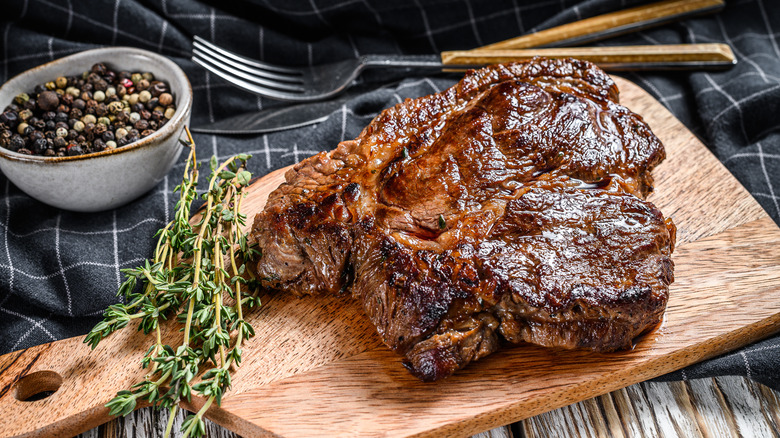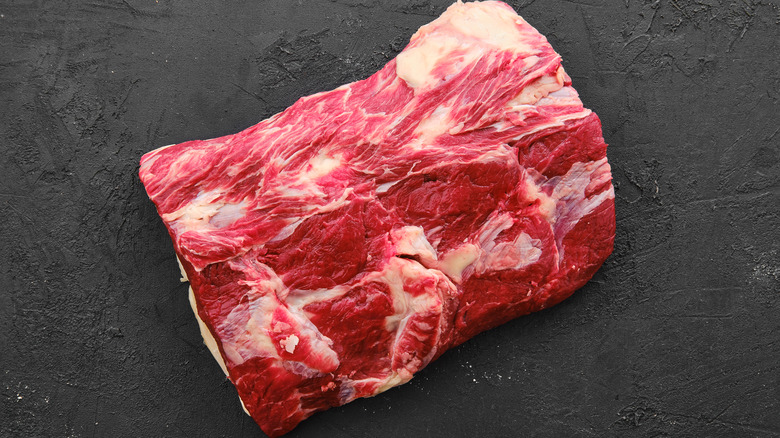The Real Difference Between Chuck Roast And Chuck Steak
When stepping up to the glass counter of a butcher or deli, it can be pretty overwhelming to know what you're looking at. It's great to start a conversation with the butcher and take advantage of their expertise, but sometimes you just need to pop in and get what you need.
Some items that might trip up less experienced chefs are the chuck roast and chuck steak. It isn't a massive canyon separating these two, but it's important to know the differences for the best results. The chuck is not the easiest part of the cow to work with, and a little bit of knowledge can go a long way.
When it comes to talking about cuts of beef, the cow is usually divided up into primal cuts. The chuck is one cut that comes from the animal's shoulders, just behind its neck. According to Acabonac Farms, this versatile selection is associated with serious flavor from its rich, marbled fat. Knowing that the chuck can be a tender centerpiece to countless dishes, you can boost your expertise by learning how to make the selection between a chuck roast and chuck steak.
The difference comes down to cut
When it comes to telling the difference between a chuck roast and chuck steak, it all comes down to the style of cut. The Art of Manliness notes that a steak is a meat that is cut across the muscle fibers. In this case, chuck steak is just a smaller cut of meat taken off of the roast. Because of this it will be smaller, cook faster, and won't have a bone present. It can easily be cooked up on a grill or in a pan like any other cut of steak, but will also benefit from a serious marinade according to Chicago Steak Company.
The roast on the other hand is usually much larger, and can even be cut down into steaks for the enterprising penny pinchers out there, per Livestrong. It's more often used in dishes like beef stew and Italian beef sandwiches, or served up braised in its own juices.
The key to both of these cuts is that they are cooked slowly on a low heat (via Chicago Steak Company). This is because high temperature cooking will cause the meat to toughen up, and become chewy. It won't affect the flavor, but might ruin the dining experience. The Fork Bite notes that longer cooking times on the other hand allow the gristle and collagen to render while still keeping the muscles tender. Either cut of chuck can be a beautifully tender and flavorful meat if cooked correctly.

